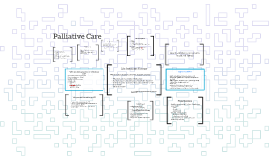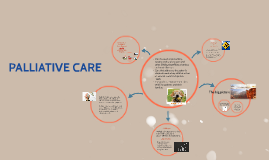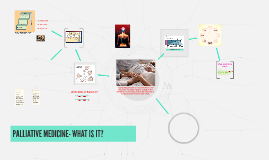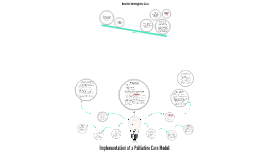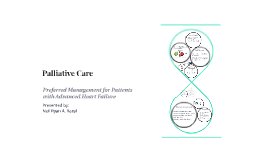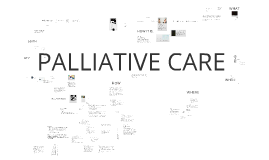Palliative Care
Transcript: Early referral to palliative care also leads to appropriate referrals to hospice care and reduces the use of futile or unnecessary intensive care costs. Palliative care provides for all facets of suffering or discomfort that a patient may experience. Websites to obtain more information The prison hospice movement mostly came from the fact that the courts have ruled that inmates have the right to quality health care. It is the responsibility of the supervising government (Federal or State) to provide quality health care to the inmates under their care. Prison health care must meet the minimum standards of community health care. Since hospice is a standard of health care, it is only right to give quality hospice care to inmates. www.getpalliativecare.org www.palliativedoctors.org www.nhprco.org/resources/pediatrichospice-and-palliative-care www.caringinfo.org www.totallegal.com/livingwill.asp In 2003, more than 53,000 children died in the United States. Enhanced education to caregivers makes them feel more capable to care for pediatric patients with end of life issues. Discontinuing life sustaining treatment is not a requirement for palliative care. The program focuses on disease education, options for treatment, prognosis ,and advanced care planning . The focus of care is to provide appropriate physical, psychosocial, and spiritual support to the children, and the families of children, facing life threatening conditions. Plan of Action Palliative care uses the combined expertise of physicians, nurses, pharmacists, social workers, and chaplains to provide patients, and their families, with the supportive care they need to improve the quality of life when facing a life-limiting disease. Patient barriers Start at local level in each of our own communities to educate patients and families about the benefits of palliative care by attending health fairs and speaking to local community groups. Educate healthcare providers so they know when to offer palliative care to their patients. Connect with other Walden University students and faculty to provide information on palliative care as well as suggest ways they can become involved in social change in their communities. Establish a website for access to information and fund-raising events. End of life care spending amounts to 10-12% of all healthcare spending in the United States. Medicare is the payer for many, and 25-30% of all Medicare spending is on end of life care. Restrictions in the Medicare Benefit enacted in 1982 limit the expansion of palliative care. Medicare denies any claims for treatments that could be considered "curative" under the hospice benefit. As technology has changed, not everyone agrees about what is considered curative, versus treatment to improve the quality of life in chronic disease. "The centers for Medicare & Medicaid Services estimated that approximately 80% of the healthcare budget was spent during the patient's final month and covered costly resuscitation efforts and aggressive treatments." Inpatient expenditures for Medicare patients increased by 60% in 1999, and one quarter of those patients died. During that same year, 50% of feeding tube placements, 60% of intubations, and 75% of CPR recipients that were Medicare patients also did not survive. Purpose Pediatric Patients Bernato, A . E., McClellan, M.B., Kagay, C.R., & Garber, A.M. (2004). Trends in inpatient treatment intensity among Medicare beneficiaries at the end of life. Health Services Research, 39(2), 363-376. Friedman, B. T. Harwood, M. K., and Shields, M. (2002). Barriers and enablers to hospice referrals: An expert overview. Journal of palliative Medicine (5)1, 73-84. Hoffman, R. (2005). The evolution of hospice in America. Nursing's role in the movement. Journal of Gerontological Nursing 31 (7), 26-35. Jennings, B., & Morrissey, M. B. (2011) . Healthcare costs in end -of-life and palliative care: The quest for ethical reform. Journal of Social Work in End-of-life Care, 7 (4), 300-317. McGrath, L., Foote, D. G. , Frith, K., & Hall, W. (2013). Cost effectiveness of a palliative care program in a rural community hospital. Nursing Economics, 31 (4) , 176-183. Ramchandran, K., M.D., & Von Roenn, Jamie H, MD. (2013). Palliative care always. Oncology, 27(1), 13-6, 27-30, 32-4 passim. “Palliative care is coming to be regarded as a human right” (Wright, 2008, pg.1). As the baby boomer population ages, it will put increased pressure on an already strained health care system to meet their care needs. It will become more important than ever for physicians and health care systems to be fiscally responsible and good stewards of resources. Patients are also entitled to the best possible care and comfort when they have chronic, life-limiting, or terminal diseases. Cost Friedman, B. T., Harwood, M. K., and Shields, M. (2002). Barriers and enablers to hospice referrals: An expert overview. Journal of Palliative Medicine (5)1, 73-84. Our research revealed that the obstacles to timely







